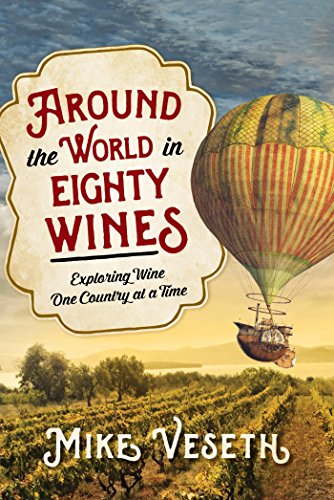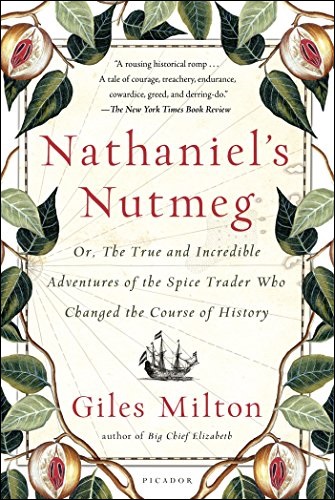We’ve talked travel around the world and we’ve talked survivor types… now let’s take a virtual tour of Chicago via the movies.
Now, there’s a lot of movies set in Chicago that could be included in this list, but were not included, because of the following reasons:
1) set in Chicago, but didn’t really travel around Chicago or stayed in one neighborhood (like Home Alone, filmed mostly in the northern suburb of Winnetka), or stayed entirely inside, so views of Chicago are not a big part of the movie nor is the city really part of the storyline — in other words, the movie’s setting could’ve been Anytown, U.S.A.
2) set in Chicago, but actually filmed somewhere else — for example, My Big Fat Greek Wedding and its sequel (which both used only some stock footage to establish Chicago as their location), and ironically enough, the musical Chicago, were both filmed in Toronto;
3) set in Chicago, but so transformed by certain elements as to be quite different. I, Robot was set in 2035 Chicago ‒ and it looks like Chicago of the future ‒ but it was actually filmed in Vancouver and transformed via CGI into Chicago.
If you view these movies in the order that they were filmed/released, you can see how the city changes over time. Links to trailers are provided in each summary.
19. Running Scared (1986)
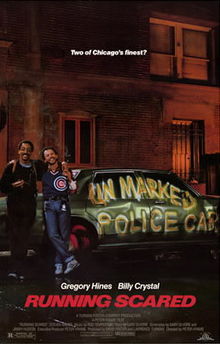
Most popular “cop films” are shot/set in either New York City or Los Angeles, and at the time, the hottest police show on TV was Miami Vice. Running Scared put Chicago on the map, both as a filming location, and as another great place to set police films.
Billy Crystal (in his breakout role) and Gregory Hines play a pair of long-time wisecracking partners who, after nearly getting killed on the job, decide they want to retire and move to Key West to open a bar. But before they can do so, they get dragged into one last case.
Filmed around the city, the L train practically plays a character on its own, and the Thompson Center in the Loop is a setting for a major scene.
18. Divergent (and its sequels, Insurgent and Allegiant) (2014-2016)

In science fiction films, one city is often used to stand in for another, or a city is so transformed by CGI as to be unrecognizable. Divergent and its sequels are a little different, as while Chicago is transformed into dystopian, post-apocalyptic Chicago of an undetermined future date, it is still very recognizable as the Chicago we know, and one could visit some of the landmarks in the film. (Don’t jump off the L, however.)
In this future, the residents are divided into five factions, and the Faceless, who have no status. At 16, regardless of which faction they grew up in, teenagers decide which faction they will spend the rest of their life with. Central character Beatrice, going for her aptitude test, finds out she is Divergent – meaning she cannot be controlled by the government – which makes her a danger. If you’re into dystopian storylines, you’ll enjoy these movies – or the original novels they’re based upon.
17. Transformers: Dark of the Moon: (2011)

This is the third film in the six-picture live-action Transformers series, which started in 2007. Dark Side of the Moon is not fully set in Chicago, but one of its major battle scenes takes place in the heart of the city, where numerous buildings on the north side of the Loop and along the Chicago River are destroyed/toppled like dominos in a heart-pounding action sequence.
If you don’t like Chicago, well, then this might be the movie for you. If you love Chicago, but get kind of a vicarious thrill when something strange is done to the city in the movies, then this film is also for you. (Click to watch the trailer, and you can see some of that action — I had seen the first Transformers film but not the second, and it’s the only reason I went to see this one in the theaters.)
Best if you’ve seen the first two Transformers films so you know what this one is about. Best one overall in the series? Well, that’s a personal choice.
16. Nothing in Common (1986)

Nothing in Common was Jackie Gleason’s last role — he was suffering from terminal cancer when it was filmed. It was also perhaps Tom Hanks’ most pivotal role, marking his move from more comedic roles like Bosom Buddies, Splash, and Bachelor Party, to more dramatic films like Big and Forrest Gump.
Tom Hanks plays an advertising executive who is surprised when his parents split after 36 years of marriage. His father has just been let go from his job of 35 years, and it turns out that he is facing diabetes-related surgery. Hanks’ character must deal with his parents adjusting to life without one another, his father’s illness, and his own recent breakup, as well as simultaneously trying to produce a major campaign at work that could lead to his long-desired promotion to partner. It’s a film about family and the ties that bind (and occassionally gag).
15. My Best Friend’s Wedding (1997)
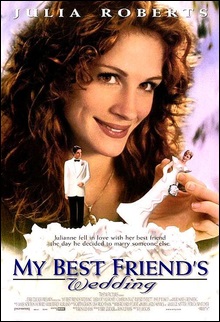
The main reason My Best Friend’s Wedding makes this list is that it jumps all over Chicago.
The problem is that it jumps allll over Chicago, sometimes in some really terrible ways, and anybody who lives in Chicago can point out a huge amount of continuity errors. (Would anybody flying into O’Hare but going to the North Shore drive all the way downtown and then head up Lake Shore Drive? No way.) Most infamously, in scenes shot on Lake Shore Drive, the lake can be seen changing from side to side, at times within the same scene. Additionally, there’s a scene on one of Chicago’s famous river tourism boats, and the order of which well-known landmarks appear behind them do not match any possible order they would happen in real life with the conversation going at the speed that it is.
Still, this is a movie that shows off a lot of what’s great about Chicago in the summer. And it’s a charming enough rom-com if you need one!
14. The Fugitive

The Fugitive, like Soul Food and Back Draft (further up this list), are films about everyday people in everyday Chicago, although in this case, Dr. Richard Kimble (Harrison Ford) is a Chicago vascular surgeon who arrives home one night to find his wife fatally stabbed by a one-armer intruder, who is still there. Kimble struggles with the killer, but the man gets away, and due to other circumstantial evidence, Kimble gets wrongly convicted of his wife’s murder.
While being transferred to a prison, some other prisoners attempt to escape — causing the bus they are in to fall down a ravine and collide with a train. Kimble manages to escape the scene of the accident and returns to Chicago, where he searches for the murderer. Note: the train scenes were actually filmed in North Carolina, but the city scenes were filmed in Chicago. There’s one particular scene that is filmed over a neighborhood, showing Chicago’s typical block layout, that is so very, very Chicago.
The Fugitive is an outstanding drama film, perhaps one of Ford’s very best.
13. While You Were Sleeping (1995)

Sandra Bullock’s career has more recently been heavier on producing and more dramatic roles, but some of her best roles came in comedic or romantic films. In While You Were Sleeping, she plays Lucy, a lonely CTA fare token collector. She has a secret crush on a handsome commuter, Peter (Peter Gallagher) she sees nearly every day.
On Christmas, Peter gets mugged on the CTA platform and pushed onto the tracks. She rescues him from an oncoming train, but he is in a coma, and she accompanies him to the hospital. A nurse overhears Lucy talking to herself, and mistakes her for Peter’s fiancé, and from there, it becomes a Shakespearean-level comedy of errors, as Lucy wants to tell the truth, but circumstances in Peter’s family make her keep lying to protect them — at least, until Peter eventually wakes up.
This is Bullock at her charming, comedic best, paired with Bill Pullman and surrounded by a great cast and the beauty of Chicago and its neighborhoods.
12. The Untouchables (1987)

Brian DePalmas’s The Untouchables is considered an American crime masterpiece, telling the story of Eliot Ness trying to bring crime kingpin Al Capone to justice during Prohibition.
Loaded with an all-star cast and masterful performances, The Untouchables shows how much of modern Chicago looks just like Chicago of nearly 100 years ago, filmed in the city in 1986. The film was nominated for and won a number of awards.
Eagle-eyed movie fans will recognize the stretch of LaSalle Street used later in The Dark Knight (not to mention other films set in Chicago). One of the best-remembered scenes is “the baby carriage scene” filmed in Union Station, where a runaway baby carriage gets caught in a shootout between Eliot Ness and Al Capone’s henchmen. (Spoiler: they do prevent the baby from being shot!)
11. Road to Perdition (2002)

Another American crime drama – this one directed by Sam Mendes – and focuses on a mob enforcer and his son seeking vengeance against another mobster, who murdered his family. While centering around a storyline that focuses on the consequences of violence, the film also told a story of relationships between fathers and sons, with a few sub-stories skillfully woven together.
Based on the graphic novel of the same name, Road to Perdition received a lot of accolades for its cinematography. Tom Hanks leads an all-star cast of this award-winning film, which was shot on location in Chicago in places like the University Club of Chicago, the Pullman neighborhood, and the suburbs of Geneva and Evanston.
10. Wayne’s World (1992)

Chicago-centric Wayne’s World was set in suburban Aurora, and many of the “neighborhood scenes” were for the most part filmed in Los Angeles, not Chicago.
I’m including it on this list for one very specific reason: during the famous “Bohemian Rhapsody” scene, when Wayne and Garth travel to Milwaukee to see Alice Cooper, they drive from Aurora via Chicago to Milwaukee, and the route they take — if you recognize the various locations seen on the drive — could at best be called convoluted. (In fact, anybody anxious to make good time between Aurora and Milwaukee would go nowhere near downtown Chicago.) (side note: did Freddie Mercury get to see a preview of the Bohemian Rhapsody scene before he died, I wonder?)
While you can still see and visit a number of the locations seen in the montage, sadly, the coolest one of them all – the cars piled on a spike – is no longer there.
9. Rookie of the Year (1993)

Rookie of the Year focuses on the most Chicago of Chicago institutions: the Chicago Cubs.
Henry Rowengartner (Thomas Ian Nicholas) is a skill-less Little Leaguer who — like many Chicago kids — dreams of playing for the Cubs. He breaks his arm, and when the doctor removes the cast, it’s found that Henry’s tendons have healed a “little too tight” — and suddenly, he can pitch at Major League speeds.
Henry and his friends attend a Cubs game, where they get a home run ball in the bleacher seats. Encouraged by those around him to “throw it back”, since it was hit by the visiting team, not the Cubs, Henry does — and delivers a hard-driving pitch to the catcher, 435 feet away. The Cubs’ general manager, desperate to find a way to drive attendance at the games, finds Henry and signs him up for the team.
It’s a cute and fun baseball movie, ending with Henry displaying a World Series championship ring. (The Cubs would have to wait until 2016 to win the league title, however.)
8. The Dark Knight (2008)
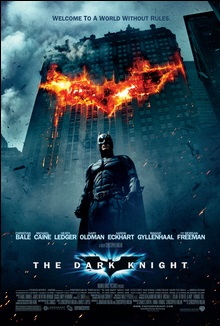
Christopher Nolan’s Batman trilogy was filmed throughout Chicago, but perhaps the most memorable and iconic of the three films is 2008’s The Dark Knight.
Widely regarded as one of the best superhero films of all time, it stars Christian Bale as Batman/Bruce Wayne, and Heath Ledger, who would win a posthumous Academy Award for his role as the Joker.
While CGI is used to turn Chicago fully into Gotham, it is still easy to recognize a variety of landmarks throughout the film, and Nolan gives a loving touch to the city throughout the trilogy: from the opening scene, filmed at the Old Post Office (here turned into a bank); to panning views across the skyline; from the truck being blown up and over like an acrobat on LaSalle; to Batman’s speed chase through Lower Wacker — you’ll find it hard to drive around the Loop in Chicago and not be reminded of scenes in this movie at nearly every turn.
7. Adventures in Babysitting (1987)

Adventures in Babysitting was a teen comedy released in the golden years of teen movies — that is, the decade dominated by John Hughes iconic teen films! And, like most of Hughes’ films, this one is set in Chicago.
Elizabeth Shue plays Chris Parker, whose boyfriend cancels their anniversary date — and then she ends up babysitting the Thor-worshipping 8-year-old Sara Anderson instead. (This is before all the Marvel movies came out, and yes, the Thor thing is an important plot point later.) She had invited her friend, Brenda, over, but receives a panicked call from her, finding out she had run away and ended up at a downtown bus station in Chicago. She plans to pick her up alone, but is convinced by the kids she is looking after to take them with her — and from there they proceed to have a variety of misadventures.
While this film shows a lot of Chicago at night — and some parts of Chicago that most people wouldn’t be familiar with, like the lower Lower Wacker Drive, the climatic scene is set atop the unmistakable Crain Communications Building‘s (previously known as the Smurfit-Stone Building) diamond-shaped glass roof. The building had only opened three years before the movie came out, but is now perpetually linked with images from the film.
6. Kissing a Fool (1998)

Jason Lee plays Jay, a neurotic novelist, who is trying to get over his breakup with his girlfriend, Natasha, by writing his first book about their relationship. He’s best friends with Max (David Schwimmer), an alpha-male type sports broadcaster. One day, Jay decides to set Max up his editor Samantha (Mili Avital), and is shocked when they announce they’re engaged two weeks later.
Max has always been a commitment-phobe, however, and he panics at the thought that this might be the last woman he ever sleeps with — so he tries to get Jay to seduce Samantha as a test of her loyalty to him. Jay refuses because he thinks Max is nuts to propose such a “test”, but also because he realizes that he may have made a huge mistake, as he realizes that he’s been attracted to Samantha all along.
This film shows off the best of Chicago in midsummer, as well as highlighting local neighborhoods, and even getting in an appearance by the Cubs. It’s also sweet and very funny. It also features a number of tunes by The Mighty Blue Kings, a Chicago jump blues band. (If you’re a fan of bands like the Squirrel Nut Zippers or Postmodern Jukebox, you’ll love MBK’s work. Check out their albums Meet Me In Uptown; Come One, Come All; and their breezy Christmas Album.)
5. About Last Night… (1986)

About Last Night… is kind of the film where the “Brat Pack” (teen stars of the early/mid ’80s) grew up and had one of their first adult comedies. What happens when two people fall in love – how do their friendships change? It was made in 1986, so the main reasons it didn’t age well are clothes, big hair, and bad music. (Oh, and Jim Belushi’s character is a bit cro-magnon in his views…)
But, other than that, About Last Night… covers just about everything that local citizens love about Chicago: the bars, the summer recreational leagues, and yeah, even taking walks along the frozen winter in the middle of winter. It’s got the classic view of Streeterville as seen from North Avenue Beach, and it’s got the L and sports and all the different aspects about the big city, from high-powered jobs downtown to two Chicagoans getting their first apartment together.
4. Backdraft (1991)

Backdraft at its core is the tale of two Chicago brothers, the older one, Stephen, a career fireman and the younger, Brian, just joining the force. Their father was a firefighter, too, and Brian witnessed him die on the job when he was a child. There’s also the fire fighters’ story line: a lot of recent fires look like the ones set by an imprisoned arsonist/pyromaniac, and there’s a lot of firemen dying on the job. When Brian can’t cut it as a fireman, he ends up helping to investigate the source of the fires.
Backdraft has gotten some criticism over its realism — the conditions that real firefighters are worse, there is so much smoke that visibility is worse — but that wouldn’t make good moviemaking. Ultimately, the movie is about the men and women who are first responders — how they put themselves in harm’s way, and the danger and the heartbreak they face, and how their families cope.
3. The Blues Brothers (1980)

If you ask people for the name of a Chicago comedy, chances are pretty good that Blues Brothers will come up almost immediately. This classic stars Dan Akroyd and John Belushi as Jake and Elwood Blues, a role they originated on Saturday Night Live.
The Blues Brothers take up “a mission from God” to reform their old band and save the orphanage that they grew up in by paying off its outstanding $5,000 tax bill in eleven days. In addition to one of Carrie Fisher’s best-known roles outside of the Star Wars franchise, the movie is filled with appearances by well-known blues musicians like James Brown, Aretha Franklin, Ray Charles, and John Lee Hooker, among others. Those with a keen eye will spot small roles by Steven Spielberg, Joe Walsh, Chaka Khan, Frank Oz, Twiggy, and John Candy.
It’s filmed around Chicago and some of its most memorable scenes include a car chase through the now-demolished Dixie Square Mall (which had closed over a year before the scene was filmed), the big musical finale at the Palace Hotel Ballroom, and the grand finale throughout the downtown area.
2. High Fidelity (2000)

Top Five Reasons to Love High Fidelity:
5. All-around awesome casting, and beautifully acted — as late film critic Roger Ebert said about the film, “Watching High Fidelity, I had the feeling I could walk out of the theater and meet the same people on the street — and want to, which is an even higher compliment.”
4. It’s a great film about how we love music, how it shapes our lives, and how it influences us. Not to mention a fabulous salute to the Chicago music scene.
3. John Cusack as Rob Gordon, the central character, breaks the fourth wall constantly to talk to the audience. And it really, really works for this film. Rob is the grown-up version of the angst-ridden, guy-next-door characters that made him famous (like Lloyd in Say Anything and Lane in Better of Dead). Cusack has a career nearly 40 years long, and this is probably his best role.
2. Jack Black in his breakout role as Barry, stealing just about every scene he’s in.
1. While High Fidelity is based on Nick Hornby’s novel of the same name, it had some minor details changed, most notably being set in Chicago instead of London. And it works so well as a Chicago film, capturing the Chicago vibe, and showing off its neighborhoods, particularly Wicker Park.
1. Ferris Bueller’s Day Off (1986)

John Hughes defined coming-of-age teen comedy in the 1980s, and his influence continues to this day. His teen films included Sixteen Candles, The Breakfast Club, Pretty in Pink, Some Kind of Wonderful. But he also wrote, directed, or produced a number of well-loved films such as Mr. Mom, Uncle Buck, National Lampoon’s Vacation, and Home Alone.
Most of Hughes’ films were set in or near his beloved hometown of Chicago. His teen opus of Ferris Bueller’s Day Off is his self-described “love letter” to Chicago, covering everything and anything related to the city: its parades, its landmarks, its sports teams, its architecture, its lakefront. Amazingly, he wrote the script in under a week.
The film centers around Ferris Bueller (Matthew Broderick), a high school senior who decides he wants to have one more day of playing hooky before he graduates. He ropes his girlfriend, Sloane (Mia Sara), and his best friend, the hypochondriac Cameron (Alan Ruck), into taking the day off with him. The school principal is determined to catch Ferris out for lying, as is his sister, Jeannie. In the course of the day, Ferris and his friends eat at a fancy French restaurant, check out the Sears Tower (now Willis Tower), join in a parade, catch a Cubs game, and visit the Art Institute, among other things. The film is hilarious and joyful, a beautiful salute to Chicago and its spirit.
























 In February 2003, the world watched in shock as the Columbia disintegrated on its re-entry into Earth’s atmosphere, reminding us of the intense dangers of space travel and exploration.
In February 2003, the world watched in shock as the Columbia disintegrated on its re-entry into Earth’s atmosphere, reminding us of the intense dangers of space travel and exploration.
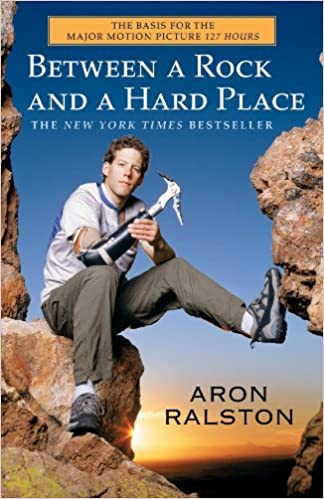 What would you do to survive?
What would you do to survive?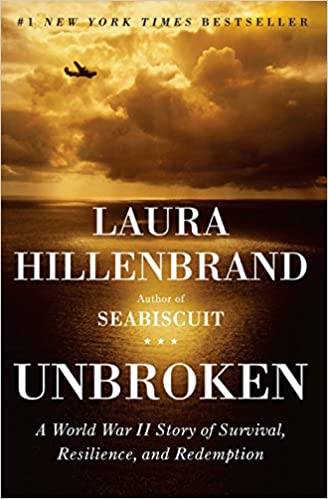 In May 1943, Lieutenant Louis Zamperini of the Army Air Forces and two other men survived the crash of their bomber, thousands of miles from civilization.
In May 1943, Lieutenant Louis Zamperini of the Army Air Forces and two other men survived the crash of their bomber, thousands of miles from civilization.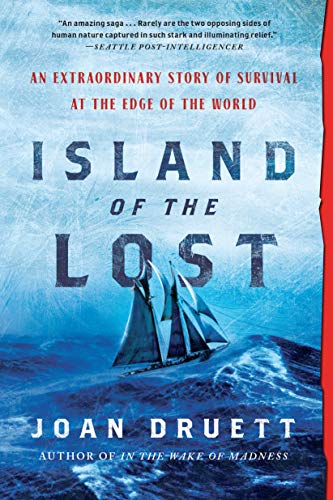
 In 1985, two men, Simon Yates and Joe Simpson, successfully attempted the previously unclimbed West Face of Peru’s Siula Grande. As they were descending back to base camp, connected by only 150 feet of line, Simpson fell and shattered his right leg. Yates did what he could to try to lower his friend to base camp, but when Simpson fell again, the exhausted Yates cut the rope, which dropped Simpson into a crevasse. Thinking his friend now dead, Yates eventually made his way back to base camp.
In 1985, two men, Simon Yates and Joe Simpson, successfully attempted the previously unclimbed West Face of Peru’s Siula Grande. As they were descending back to base camp, connected by only 150 feet of line, Simpson fell and shattered his right leg. Yates did what he could to try to lower his friend to base camp, but when Simpson fell again, the exhausted Yates cut the rope, which dropped Simpson into a crevasse. Thinking his friend now dead, Yates eventually made his way back to base camp. Most of us are at least vaguely familiar with the story of Ernest Shackleton’s famous expedition to the Antarctic aboard the Endurance. But much lesser known is the story of Douglas Mawson, who led the Australasian Antarctic Expedition in 1912-13, two years before Shackleton’s doomed expedition.
Most of us are at least vaguely familiar with the story of Ernest Shackleton’s famous expedition to the Antarctic aboard the Endurance. But much lesser known is the story of Douglas Mawson, who led the Australasian Antarctic Expedition in 1912-13, two years before Shackleton’s doomed expedition. One of the greatest tales of survival of all time:
One of the greatest tales of survival of all time: 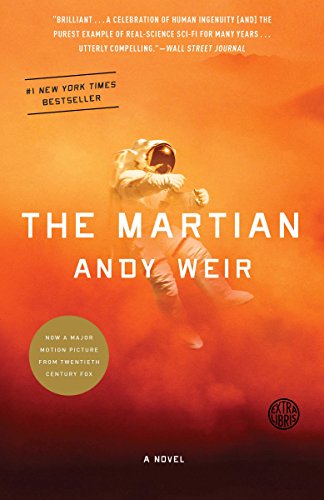




 New Zealand is a fantastic place to visit. The people are friendly, the attitude is laid back, and the countryside is gorgeous. So who wouldn’t want to see as much of it as possible?
New Zealand is a fantastic place to visit. The people are friendly, the attitude is laid back, and the countryside is gorgeous. So who wouldn’t want to see as much of it as possible? Yes, Paris is a city, and may seem an odd inclusion about getting out in nature. But since the focus in this book is about walking, and Paris is a city designed to favor pedestrians, I feel compelled to include it on this list.
Yes, Paris is a city, and may seem an odd inclusion about getting out in nature. But since the focus in this book is about walking, and Paris is a city designed to favor pedestrians, I feel compelled to include it on this list. There are many books about walking the
There are many books about walking the  Irishman Connor O’Donoghue admits he isn’t the “average” person who attempts a thru-hike; in the opening pages, he admits his struggle with obesity, and wonders at times what he’s gotten himself into.
Irishman Connor O’Donoghue admits he isn’t the “average” person who attempts a thru-hike; in the opening pages, he admits his struggle with obesity, and wonders at times what he’s gotten himself into. The motto of thru-hikers is “walk your own walk”, and nowhere is this better illustrated than when you get to reading several memoirs of the same trail, seeing how different people experience the same miles.
The motto of thru-hikers is “walk your own walk”, and nowhere is this better illustrated than when you get to reading several memoirs of the same trail, seeing how different people experience the same miles. Compared to other books on this list,
Compared to other books on this list,  What do you imagine yourself attempting at age 65? Would it including walking the entire Appalachian Trail – alone – and would you walk it three times?
What do you imagine yourself attempting at age 65? Would it including walking the entire Appalachian Trail – alone – and would you walk it three times? Mention the Pacific Crest Trail, and most people will probably talk about Wild, which was on Oprah’s book club and was made into a movie. But for me, Carrot Quinn’s
Mention the Pacific Crest Trail, and most people will probably talk about Wild, which was on Oprah’s book club and was made into a movie. But for me, Carrot Quinn’s  Fresh out of college, Jennifer Pharr Davis wasn’t sure what she wanted to do, so she decided to take a walk: or more precisely, a thru-hike of the Appalachian Trail.
Fresh out of college, Jennifer Pharr Davis wasn’t sure what she wanted to do, so she decided to take a walk: or more precisely, a thru-hike of the Appalachian Trail. Englishman Keith Foskett has written four excellent, award-winning books about long-distance hiking, covering the Camino de Santiago, the Appalachian Trail, the Pacific Crest Trail, and walking across Scotland. Picking one as the ‘best’ is a bit challenging; so I’ll go with the first of his books that I read –
Englishman Keith Foskett has written four excellent, award-winning books about long-distance hiking, covering the Camino de Santiago, the Appalachian Trail, the Pacific Crest Trail, and walking across Scotland. Picking one as the ‘best’ is a bit challenging; so I’ll go with the first of his books that I read –  Based on the book
Based on the book  Based on
Based on  Danish author Karen Blixen (a.k.a. Isak Dinesen, played by Meryl Streep) was 28 when she moved to British East Africa (now Kenya) in 1913 to marry Baron Bror von Blixen-Fnecke. Based on
Danish author Karen Blixen (a.k.a. Isak Dinesen, played by Meryl Streep) was 28 when she moved to British East Africa (now Kenya) in 1913 to marry Baron Bror von Blixen-Fnecke. Based on  Yes, the premise of Score! is downright goofy – a hockey-centered comedic musical. The story centers around Farley Gordon, a home-schooled teenager who becomes an overnight hockey sensation while he navigates the rough waters of instant fame.
Yes, the premise of Score! is downright goofy – a hockey-centered comedic musical. The story centers around Farley Gordon, a home-schooled teenager who becomes an overnight hockey sensation while he navigates the rough waters of instant fame. It really shouldn’t be a surprise that a number of great travel-inspiring films are based on personal memoirs, and here is another one:
It really shouldn’t be a surprise that a number of great travel-inspiring films are based on personal memoirs, and here is another one: 

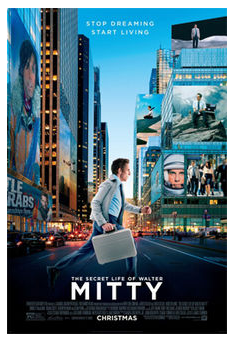


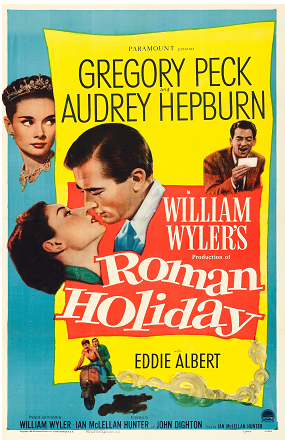



 In 1981, Steven Spielberg introduced us to one of the most beloved action figures of all time, Indiana Jones, in his film
In 1981, Steven Spielberg introduced us to one of the most beloved action figures of all time, Indiana Jones, in his film 
 American Terroir: Savoring the Flavors of Our Woods, Waters, and Fields
American Terroir: Savoring the Flavors of Our Woods, Waters, and Fields





